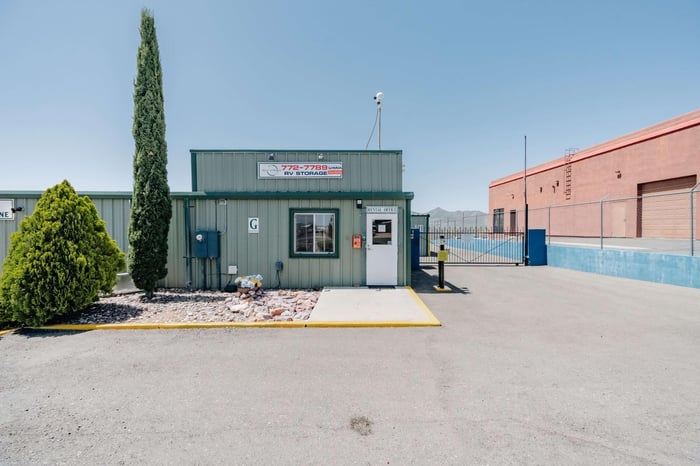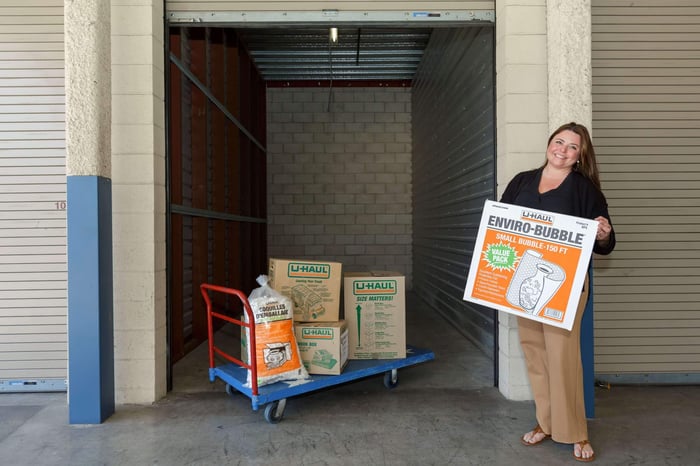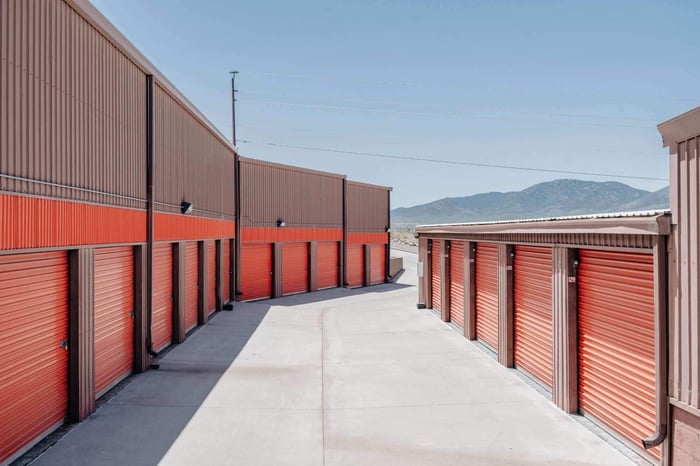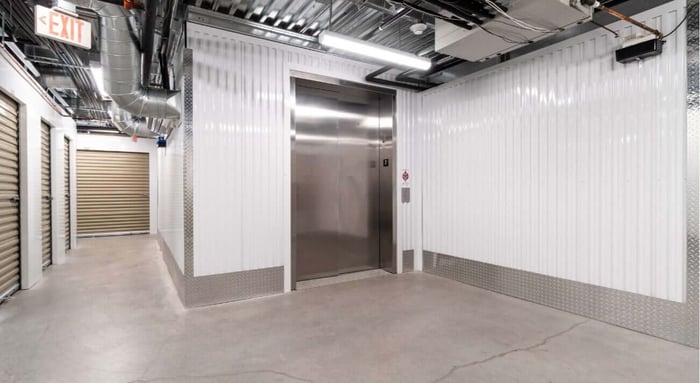How Do I Pack Items for a Storage Unit? Packing your belongings for a self-storage unit can feel overwhelming, but with the right approach, you can protect everything and maximize your storage space. At STORAGExperts, we’re here to make the process easier, no matter which of our many convenient locations you choose. Stop by your nearest facility to find the perfect storage solution for your needs. Keep reading for practical, easy-to-follow tips to arrange, secure, and care for your items like a pro!
Easy Packing Tips for Your Storage Unit
Packing for a storage unit requires more than just stuffing things in boxes. With the right strategy, you can protect your belongings, save space, and make your unit easy to access. At STORAGExperts, we’ve put together your ultimate guide with tricks, tools, and expert tips!
Assessing What to Store
Before you start packing, assess everything you plan to store. Take stock of furniture, electronics, clothes, and other items. Keep in mind that certain belongings like appliances, tanks, and photos may require special care.
- Prioritize essentials: Decide what items you’ll need quick access and set them aside.
- Consider safety: Fragile items like mirrors and delicate sheets need extra protection to avoid damage.
- Think climate: If your items are sensitive to moisture, dust, or temperature fluctuations, you might need a climate-control storage facility.
Gathering Packing Supplies
The right supplies are key to keeping your items safe and organized. Here’s what you’ll need:
- Cardboard boxes or plastic bins for packing.
- Bubble wrap and padding, like towels or paper, for fragile items.
- Tape to secure boxes firmly.
- Labels and markers for categorization.
- Shelving or pallets to keep boxes off the floor, reducing the risk of dirt, dust, or moisture damage.
- Heavy-duty containers for oversized loads, like bed frames or refrigerators.
With these tools, you can better protect your belongings and ensure they’re ready for storage.
Sorting and Categorizing Items
Sorting your items by category makes packing, storing, and retrieving them easier. Here are some tips to get started:
- Categorize items smartly. Group items like books, clothes, electronics, and appliances together.
- Pack by location. Store items you rarely use toward the back of the unit and frequently used items toward the front.
- Stay strategic. Arrange lighter pieces on top of heavier ones to avoid crushing items.
By categorizing properly, you’ll save time and effort when you need to find something later.
Packing Fragile Items Safely
Fragile items require extra attention to prevent damage in storage. Here’s how to handle them with care:
- Wrap individually. Use bubble wrap, towels, or soft sheets to cushion fragile belongings like mirrors or glassware.
- Double-box fragile items. Use an extra layer of padding and seal with tape to ensure better protection.
- Keep photos and documents flat. To avoid bending or damaging them, lay them between stiff boards or place them in archive-safe containers.
Using Boxes vs. Bins
Not all storage containers are created equal. Choose wisely between cardboard boxes and plastic bins based on your needs:
- Cardboard boxes are lightweight, affordable, and perfect for dry environments. However, they are less effective against moisture and pests.
- Plastic bins offer better protection against dirt, dust, and mildew. Use clear bins for easy viewing of contents.
Whichever you choose, ensure it’s the right size for your items and label each container for quick retrieval.
Labeling Your Boxes
Labels are essential to keep your things accessible and organized. Here are some suggestions:
- Use big, clear labels. Write on the side and top of each box. Use categories like “Kitchen,” “Books,” or "Electronics."
- Include details. List out key contents for easier reference.
- Label by priority. Identify “Fragile” or “Frequently Needed” boxes.
- Color code. Bright colors help make finding what you need much faster.
Proper labels will save you a lot of time and frustration when retrieving something.
Maximizing Space in the Storage Unit
Making the most of your storage unit requires strategic planning and organization. A few simple techniques can help you efficiently stack items, keep them accessible, and maximize every square inch.
Start by considering vertical space. Install shelves along the walls of your unit to keep smaller items off the ground and reduce clutter. This leaves more room for bulky belongings like furniture and makes your stored items easier to access. Take advantage of their interior storage space for large objects like dressers or drawers. Fill them with smaller, lightweight materials such as folded clothing, blankets, or tools.
When stacking your belongings, think about weight distribution for safety and convenience. Place heavier boxes or items closer to the ground at the bottom, ensuring they create a secure foundation for lighter items stacked on top. Using durable plastic bins with lids can also help you optimize space while protecting items from dust or dirt.
One effective way to organize your storage unit is by creating a door-to-back map. Place items you’ll need frequently closer to the door and less-used items deeper into the unit. The goal is to create a system that maximizes accessibility while keeping everything secure and well arranged.
Creating an Inventory List
A detailed inventory list is a game-changer when it comes to staying organized. Keeping track of everything can prevent frustration later, whether you're storing a few items or an entire household's belongings.
Start your list by categorizing your items. For example, group them into categories like clothing, furniture, electronics, or books. Use a checklist to ensure you haven’t missed anything when you pack and load the storage unit. For added clarity, assign a number or label to each box and reference its contents in your inventory. For instance, label your box as "Box 1" and note its contents (e.g., “Kitchen Materials - Serving Utensils”).
To stay even more organized, include the weight or fragility of certain items in your list. For example, mark "Heavy" for a box of books or "Fragile" for anything containing mirrors or delicate parts.
For digital enthusiasts, use apps or spreadsheets to build your inventory. A digital inventory is easier to edit and access, especially if you’re planning a future move or need a quick reference. Be sure to store a hard copy of the list inside the unit, taped to the door or a clearly visible wall space, so you can quickly reference the map of the unit’s layout.

Loading and Arranging Items in the Unit
Loading and arranging your items is vital in keeping your storage space organized and your belongings safe. Start by placing a protective layer along the storage unit floor, like old carpet or pallets. This extra layer helps prevent moisture damage, keeps items off the cold, damp ground, and adds another level of protection for your belongings.
When arranging items, work from largest to smallest. Start by placing large, solid pieces like bed frames, dressers, and refrigerators along the back walls of the storage unit. Disassemble furniture wherever possible to save space, and keep all parts in sealed bags or taped to the corresponding item for easy reassembly.
Next, stack medium-sized items like cardboard boxes, plastic bins, and containers. Align them strategically, making use of horizontal and vertical space. To reduce retrieval time, try creating rows or sections based on item type.
Be sure to reserve some space close to the door for frequently needed items. By keeping everyday stuff within reach, you won’t need to unload the entire unit when searching for an essential belonging. Finally, use masking tape or rope to secure stacks if needed, ensuring they don’t topple when accessed.
Tips for Easy Access to Stored Items
One of the most overlooked aspects of organizing a storage unit is ensuring accessibility. Without proper planning, retrieving items can quickly turn into a frustrating task. But by following a few tips, you can make storage retrieval much simpler.
- Leave a walkway. Design your unit around a central pathway that allows you to reach deep into the unit without needing to unload everything. This way, you can move freely between items.
- Label boxes. Use bold markers and labels to categorize boxes. Write the label on the lid and all sides for better visibility. For example, use labels such as “Winter Clothes” or “Bathroom Materials.” This ensures you can identify a box, no matter how it’s stacked.
- Use clear bins for frequent items. Transparent plastic containers make it easy to spot what’s inside without opening them. Opt for these for items you’ll access often.
- Take advantage of vertical storage. Place seasonal items and bulky gear, like blankets, at the bottom of your shelving or stacks. Keep smaller and more frequently accessed items on top.
- Create a mini-cleaning kit. Store cleaner, cloth rags, and small tools in an easily accessible box near the door. This gives you a quick way to maintain shelves or clean items when checking on your storage.
- Stack smartly. When lining up boxes or bins, place the heaviest items closer to the walls and the bottom of the stacks to avoid tipping over. Use your inventory map and checklist to keep everything in its place.
A well-organized storage unit can save you significant time and effort when managed correctly. By incorporating these strategies, you’ll better use your space and ensure your belongings stay safe, easy to find, and in good condition.
Wrap Up Your Storage Journey with STORAGExperts
Organizing and packing your belongings for a self storage unit doesn’t have to be overwhelming. By following the outlined tips, you’ll find effective ways to maximize your space, keep everything accessible, and protect every piece. Whether it’s carefully labeling boxes, arranging items strategically, or creating an inventory list, these steps will save you time and make your storage experience hassle-free.
For reliable, clean, and secure storage solutions, turn to STORAGExperts. Contact us today to explore how we can help you get the most out of your storage space!
Frequently Asked Questions
What materials do I need to pack items?
To pack your items effectively, you’ll need sturdy boxes or plastic bins with lids, bubble wrap for fragile belongings, packing paper or blankets to add extra padding, and packing tape to secure everything tightly. Labels and markers are essential for organizing your boxes, while plastic sheets can protect furniture from dust and dirt. To maximize your storage space, shelving units can help keep things neat and accessible.
What items should not be stored in a storage unit?
Perishable food, flammable substances, hazardous materials, and anything living, such as plants or pets, should never be stored in a storage unit. Valuables like jewelry or important documents are better kept in a secure, designated area. Additionally, objects sensitive to moisture should only be stored in climate-controlled units to avoid damage. Always check with your storage facility to confirm what’s allowed.
Can I stack boxes in a storage unit?
Yes, stacking boxes is an effective way to make the most of your available space. Place the heaviest boxes on the bottom to create a stable base and use similar-sized boxes to ensure the stack is even and secure. Avoid overloading your boxes to prevent collapsing, and make sure to label each box for easy identification when you need to retrieve something later. It is also important to keep fragile items on top or in spots where they won’t bear weight.
How do I protect fragile items for storage?
Protecting fragile items involves wrapping them individually in bubble wrap or packing paper for added cushioning. Dishes, glassware, or mirrors should go into sturdy boxes with gaps filled using packing materials like crumpled paper to prevent unnecessary movement. Label the boxes as fragile in bold on all sides, and place them carefully at the top or in an area where heavy objects won’t crush them.
How do I prevent moisture damage?
A climate-controlled storage unit can prevent moisture damage by regulating humidity levels. Placing a plastic sheet or pallet on the floor is also a good idea to keep items elevated. Silica gel packets inside boxes can help absorb extra moisture, and in particularly humid environments, opting for plastic containers instead of cardboard boxes will add another layer of protection. Leave space between the unit's walls and your items to maintain airflow, reducing the chance of mold or mildew.
How should I handle bulky items?
Bulky items like furniture or large appliances are best handled by disassembling them whenever possible. For example, take apart bed frames or tables and keep screws and small parts in a labeled bag. Wrap everything securely in furniture blankets or plastic sheets to shield it from dust or scratches, then store upright along the unit's walls. Place heavier pieces on the ground, with lighter items on top, and leave enough space for good accessibility and air circulation. This way, even your largest items stay protected and in excellent condition.




